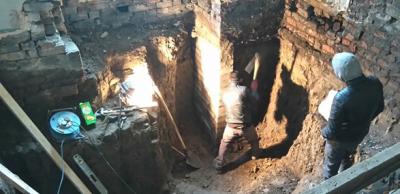How to get it right: Building control exemptions (or when you DON'T need building regulations approval)
While we love to be involved, there are times when you won’t need a Building Regulations application. Whether you are carrying out building work yourself, or employing a builder, there are a number of building regulations exemptions to both work and buildings that don't need building control approval.
The following is intended as a guide but you should always check with your local LABC team if you're in any doubt or need clarification. You can also view Planning Portal’s interactive guides for more information.
Remember, these exemptions only relate to building control applications and you may need to apply for planning permission separately, particularly if you live in, or are carrying out work, to a property that is listed or within a conservation area.
Work that does not need building control approval
- Maintenance work
- Minor repairs
- Replacing less than 25 per cent of an item, like-for-like
- Additional power or lighting points and switches (except around baths and showers)
- Alterations to existing circuits (except around baths and showers)
- Like-for-like replacements of baths, toilets, basins or sinks
- Boundary or garden walls, fences and gates
- In some cases, works that are being carried out by competent registered persons (check details for this with your local LABC team)
Buildings that do not need building control approval
- Greenhouses (providing they are not used for retail, packing or exhibiting)
- Some agricultural buildings (check with your local LABC team)
- Temporary buildings (erected for less than 28 days)
- Some ancillary buildings such as estate sales buildings and building site offices without sleeping accommodation
- Some small detached buildings (check with your local LABC team)
- Buildings that are not frequented by people (check with your local LABC team)
- Detached single storey buildings, including garages, that are less than 30m2 floor area and contain no sleeping accommodation, and are at least one metre from any boundary or constructed of non-combustible materials
- Detached single storey buildings that are less than 15m2 floor area
- An extension to a building at ground level consisting of a porch of less than 30m2 floor area and separated from the house by an external type door
- A carport open on at least two sides
- A covered yard or covered way less than 30m2
- A conservatory or porch that is less than 30m2, with a significant proportion of the roof and walls glazed (no % given), it must be at ground level, it must comply with relevant sections of Part K (glazing), be thermally separated from the dwelling by external quality windows and/or doors and the buildings heating system must not be extended into the conservatory or porch.
- Crown property
- Buildings subject to the Explosives Act
- Buildings other than houses or offices erected on a site licensed under the Nuclear Installations Act
- Buildings included in the Schedule to Section 1 of the Ancients Monuments and Archaeological Areas Act
Don’t forget that you might still need approval for any enabling works. For example creating a wider opening into an exempt conservatory would still need approval for the structural alteration to widen the opening.
Further information
For further guidance on getting building control approval visit the Planning Portal’s free guide.
Please Note: Every care was taken to ensure the information was correct at the time of publication. Any written guidance provided does not replace the user’s professional judgement. It is the responsibility of the dutyholder or person carrying out the work to ensure compliance with relevant building regulations or applicable technical standards.
Sign up to the building bulletin newsletter
Over 48,000 construction professionals have already signed up for the LABC Building Bulletin.
Join them and receive useful tips, practical technical information and industry news by email once every 6 weeks.
Subscribe to the Building Bulletin





Comments
Reply to: Extension conversion
Submitted 6 years 1 month ago
The decision on the application of the Building Regulations to a particular project remains with the Local Building Control team. However, for advice on a specific enquiry please send the details and any attachments to info@labc.co.uk.
John, LABC
Conservatory or porch
Submitted 6 years 1 month ago
Reply to: Conservatory or porch
Submitted 6 years 1 month ago
It's difficult to comment on this without seeing the actual proposal. There's a guide on our website about solid roofs on conservatories and porches that provides some useful background information – find it here:
https://www.labc.co.uk/business/resources/technical-guide-solid-roofs-conservatories-or-porches
Details of exempt buildings are in the Building Regulations 2010 which you can download for free. Please refer to Schedule 2 Class 7.
Regards,
John, LABC
Attic partition wall
Submitted 6 years ago
We moved into our house and the attic is already converted into a bedroom with eaves storage at the front and back of the house. At the rear of the house the eaves storage is much bigger - would we need building regs to move the plasterboard wall a few feet back so we could get a bigger space for the bedroom?
Thanks
Reply to: Attic partition wall
Submitted 6 years ago
In most situations the walls enclosing the room in the attic take the loading from the roof down through the stud wall, onto a floor beam. Moving this wall could result in the support for the pitched roof being affected. You should check with a structural engineer to see if the work involved is structural. The plasterboard wall sometimes forms the line of thermal separation. If the structure or thermal envelope is being affected you'll need to make a building regulations application.
Your local building control team will be pleased to provide pre-application advice on your project. Find them here: https://www.labc.co.uk/your-local-council-building-control-department — simply enter your postcode and click 'Search'.
All the best,
John, LABC
Substantially of non-combustible materials
Submitted 5 years 9 months ago
Is this a correct interpretation of the requirement, and what other common methods are there of meeting the requirement? Would a similar approach on a timber frame structure be suitable?
Reply to: Substantially of non-combustible materials
Submitted 5 years 9 months ago
To clarify, the proposed 'log cabin' will only be exempt if it contains no sleeping accommodation and if it's constructed substantially of non-combustible material (as a whole, not just the wall facing the relevant boundary).
Non-combustible materials are as defined in Table A6 of Approved Document B Volume 1.
Kind regards,
LABC
Annex
Submitted 5 years 8 months ago
What is the notable boundary distance or distance this should be away from a boundary close to other sheds,also the concreate slab on earth on high placidity clay depth.
Kind regards Mr sewell
Reply to: Annex
Submitted 5 years 8 months ago
For your specific case it would be best to seek advice from your local building control team. You can find them here: https://www.labc.co.uk/your-local-council-building-control-department — simply enter your postcode and click 'Search'.
Kind regards,
LABC
Getting building certificate with external doors to extension
Submitted 5 years 8 months ago
The extension is 24 sq m, >80% glazed area to floor area and is intended for use all year. I think a full house SAP calc is needed but builder just wants to change the doors to external ones (we had considered having no doors and would prefer not to have a threshold). Probably a full house calc would pass as we are also adding 10cm insulation on a large wall area and also replacing 40 yo double glazing. I don't like this "technicality"...but will it affect resale or anything else?
Add new comment